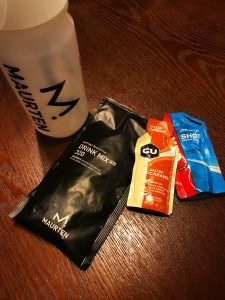Coaches, Welcome to the AHSAA Sports First Aid Health & Safety Course
Complete your required Sports First Aid Health & Safety Course online from the National Center for Sports Safety, based in Alabama!
- AHSAA PREPARE Sports Safety eLearning course satisfies the “AHSAA Sports First Aid Health & Safety for Coaches.”
- It takes approximately 2.5 hours to complete online, but does not need to be completed at once–you can stop at the end of any module, save and return.
- Purchase price of $85.
- By using this course, you are helping to fund an Alabama-based nonprofit.
- Coaches receive an AHSAA PREPARE certificate of completion upon successfully completing the course.
- *Certificates should be filed with your school’s athletic director or principal and kept for your records.
AHSAA PREPARE Sports Safety Course
- Click here to register and purchase the AHSAA PREPARE Sports Safety Course.
- Already registered for the AHSAA PREPARE Course, click here to log back in.
Social Media for SportsSafety.org
Fair Warning
Author: Dr. Richard P. Borkowski
Asking student-athletes and their parents to read, understand, and sign an informed consent form lowers injuries—and helps keep you out of court.
In 1982, a catastrophically injured high school football player at West Seattle (Wash.) High School was awarded $6.3 million when the school district was found liable for the injury. The athlete, Chris Thompson, was not warned about the dangers of lowering his head during a tackle. This now-famous case shook the athletic world.
Since then, the duty to warn athletes about the risks in their sport has remained a significant and misunderstood responsibility.
“You’re kidding!” a coach shouted during a workshop. “You mean I can get sued if I don’t tell my catcher he could injure his hand? Where do I turn in my resignation?”
For many coaches, warning athletes about potential injuries seems counter-intuitive. After all, everyone knows you can get hurt in athletics, right? So why do you need to spell out the details? The main reason for informing students about the potential risks of participation is that it actually lowers the chance of injuries. When people understand the risks, they are better able to avoid them. In addition, warning those in your charge demonstrates your credibility and shows you care.
You may also wish to inform students to reduce your liability. Most schools do this by requiring the athletes to sign an informed consent form. This form is a major tool in meeting your duty to warn participants, and it may be your best protection against a lawsuit.
While some schools choose, instead, to use a waiver form, informed consent forms offer more information and have less chance of being repudiated than waiver forms. Waivers are usually only short exculpatory statements—meaning they clear the coach and school of fault and guilt. The informed consent form, on the other hand, is both exculpatory and educational. The extra step of providing information on the risks is an important one because student-athletes under 18 years of age (in most states) cannot legally waive the negligence of a program if they are unaware of the risk.
However, there is not one “standard” informed consent form that works in all situations. These forms should be unique to your school and the sport. They should also be reviewed by your
institution’s lawyer before being used.
The Document
The objective of the informed consent form is to give the player knowledge, understanding, and appreciation about the values and potential problems of participation. Essentially, it is an agreement to participate.
To start, the heading on the form should be descriptive and in large print. All key words, such as “Warning,” “Attention,” “Please Read Carefully,” and “If you have any questions …” should be accentuated.
The form should do the following:
- It should inform the player he or she is volunteering to participate. It should explain the values and potential injuries of participation so that the athlete can decide whether the risk of injury is worth the reward of participation.
- It should explain that safety is a shared responsibility. The athlete should understand that he or she also has a responsibility for his or her own safety.
- It should state that its signer understands the requirements of the activity. This could include the need to be properly conditioned, check equipment, and report all injuries.
- It should be sport specific, mentioning the potential injuries in the sport.&
Toward the bottom of the form, the signer should be asked if he or she understands and accepts the risks of participation. For example, a sentence such as “I recognize that (the activity) can be a hazardous activity” should be included.
The most meaningful phrase is the notification that the player will not hold the school (including coach, administrators, board of education, etc.) responsible for any injuries that occur and that the signers assume full responsibility for their actions. Place this clause close to the area for signatures and the date.
Seek your school’s legal counsel in the final preparation of your informed consent form. They are the professionals and they will include the necessary legal terms, such as “I agree to hold harmless,” and/or “I release …”
The signing must be of free will; it cannot be coerced. In addition, both parents and athletes must sign it. Give a copy to the participant. Keep the original.
Don’t Hide It
A fellow coach bragged to me that he was already aware of his duty to warn and inform his players. “During equipment handout time,” he said, “I place the forms on the floor at the end of the equipment line. They put them on my desk after signing them!”
This is not the approach to take when it comes to informed consent forms. The idea is to make the distribution, reading, and signing of this form a significant event. The form should not be buried somewhere in the middle of a manual or handed out when you have two minutes to spare. In fact, the best idea is to hand out the form at a preseason parents meeting for both athletes and
parents. Ask parents and athletes if they understand all the points of the form. Ask them what other questions they have.
Check the Form
An in-line hockey rink seemed to be on the right track when it required each participant to complete an informed consent form. Its procedure was to give the captain of each team the forms to be signed. During the process of a lawsuit following a shoulder injury, it was found that neither the injured party nor any parent signed the consent forms. The captain signed them all! The lesson here is simple: Check the form. In this case, a prudent administrator would have taken the time to review the forms.
Signed informed consent forms do not mean coaches are relieved of their duties to maintain safe activities. Nor do they mean discussion on the topic is finished. Rather, they are a first step for getting the coaches and athletes on the same path toward a safe season.
Richard P. Borkowski, EdD, CAA, is a sport safety consultant based in Narberth, Pa. The former Director of Physical Education and Athletics at the Episcopal Academy in Merion, Pa., his most recent book is titled The School Sports Safety Handbook, published by LRP Publications, in Horsham, Pa.
http://www.momentummedia.com/articles/am/am1204/ovowarning.htm








